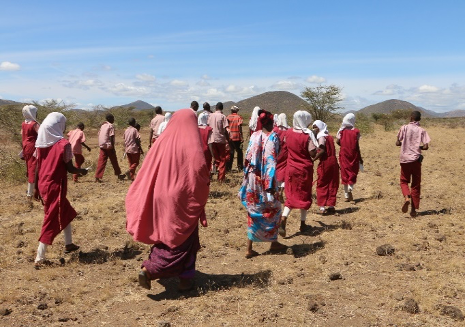The arid and semi-arid lands of northern Kenya are home to diverse ethnic groups whose cultures have evolved with the natural environment marked by low rainfall and drought resulting from climate change. The Gabbra, Boran, Saakuyye, Daasanach, El-Molo, Rendille, Samburu, Turkana, Wayu and the Somali communities are nomadic pastoralists who herd camels, cattle, sheep and goats as source of livelihood. Milk, meat, hides, and skin produced meet their economic, social, cultural and spiritual needs.

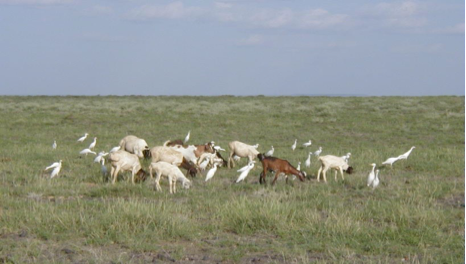
To cope with climate change consequences, communities utilize indigenous, traditional, and adaptive measures such as nomadism, herd species diversity and distribution, and weather forecasting. The latter is done based on astrology, divination, phenology, time reckoning, reading of animal entrails and the cyclical nature of historical events.
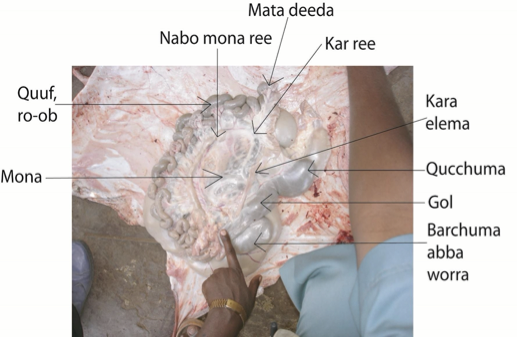
TOPOGRAPHY OF A GOAT’S ENTRAILS
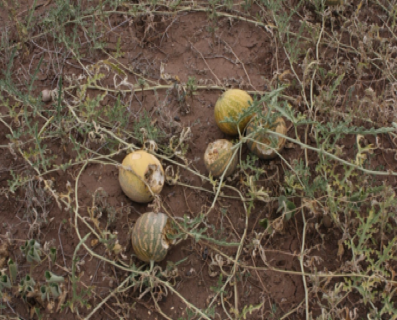
BURATE: A SPECIES OF FODDER THAT IS BECOMING RARE
Climate change is causing shifts in communities that are being threatened by loss of indigenous knowledge, disintegrating institutions that define customary political, social and resource governance. These are compounded by inadequate land tenure security, restrictions in mobility, and instability arising from rural-urban youth migration.
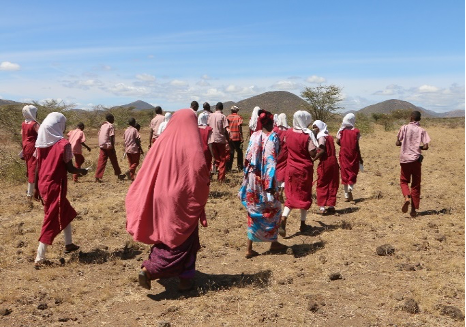
MULTI-GENERATIONAL FIELD ACTIVITIES
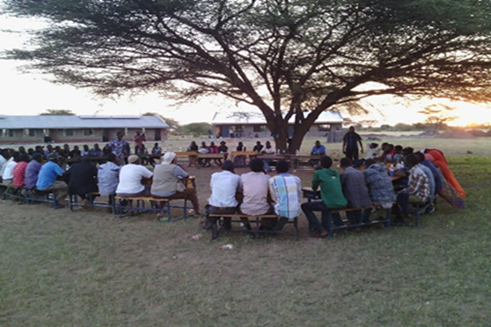
COMMUNITY MEETING
Through the project, indigenous children and youth in these communities, whether nomadic or school-based, were made aware of the impacts of climate change on their lives and they came to understand, analyze and address the concerns through community dialogues. Practical knowledge and skills were transmitted from elders to children and youth on resource management and sharing, coping strategies, and peaceful coexistence. There was a convergence of traditional and contemporary understanding of climate change, as they learned and practised together indigenous resource governance, land rights, mitigation of climate change impact on their environment, and resilience building.
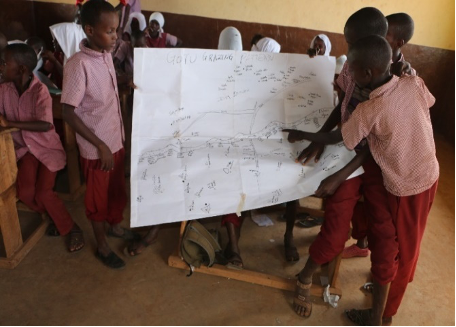
A RESOURCE MAPPING EXERCISE
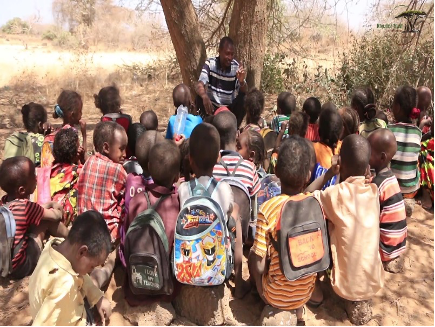
CULTURE CLUB MEMBERS ON FIELD EXCURSION
In schools and villages, community members exchanged experiences and concerns and planning meetings were held for ways forward. The voices of local children and youth matter significantly and they anticipate to join the global youth movement against Climate Change.
Documentation of traditional knowledge, beliefs and practices related to weather, seasons, cultural ceremonies, and natural disasters was done. Research efforts likewise focused on traditional means of predicting disaster and coping strategies among communities. Elders expressed their observations of changes in the weather and seasons and the impact on abundance and qualities of pasture; appearance of alien plants and animal species and their behaviour; and out of season flowering patterns of plants. They were concerned that traditional festivals and ceremonies held based on natural cycles are severely affected.
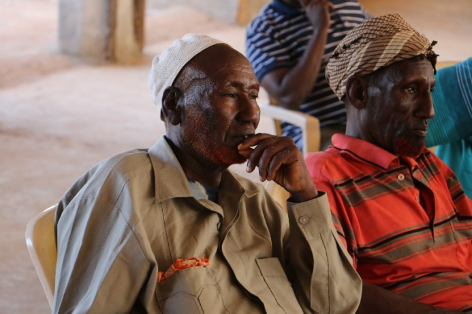
KNOWLEDGEABLE ELDERS OF KULAMAWE
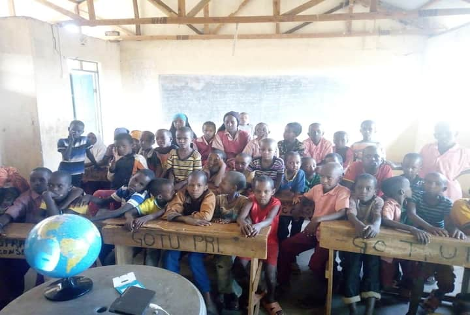
A GEOGRAPHY LESSON IN GOTU
Inter-generational and community involvement in territorial resource mapping enabled knowledge holders to share their wisdom on ecology to the succeeding generation who learned about their geography and its relation to their culture, their biodiversity, and livelihood practices such as pastoralism. Adaptation for survival and traditional resource governance such as the D’eeda system, inter-community resource sharing and conflict prevention were taught, including lessons on land tenure and land rights.
To better capture the children’s and youth’s interest, cooperation and creativity, camps and forum on climate change, culture, peace and environment through debates, drama and shows were held, while observing Covid-19 health protocols. These encounters were enriched with shared stories, riddles, poems, and traditional songs. Children and youth networks for action against climate change and awareness creation were established and expected to be strengthened through digital communication at the local, regional and global levels. Through these linkages and alliance, the youth were instilled with leadership roles to address climate change.
A youth march that drew the communities’ attention to the global climate crisis, a dramatic presentation, and tree planting ceremonies marked the celebration of Mother Earth and Climate Change.
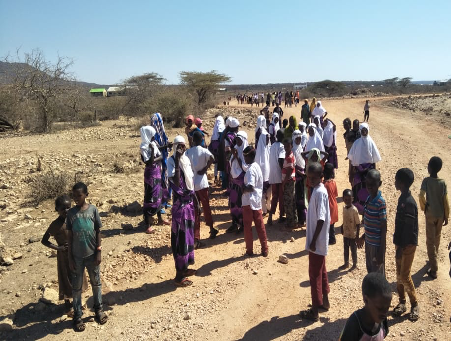
GOTU SCHOOL AND OTHER CHILDREN JOIN THE MARCH
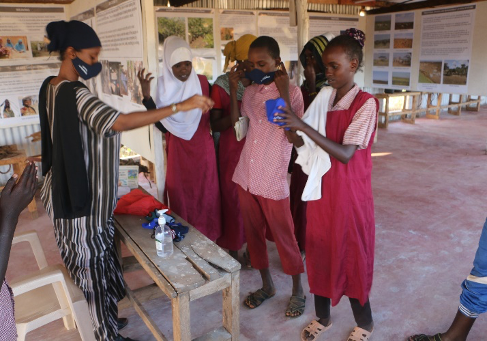
LATTU LIFESPRING DISTRIBUTES FACE MASKS TO CHILDREN.
Action day in Isiolo County. Children planted trees as a mitigation exercise and sang songs on climate change to further raise consciousness. A collection of documentaries, booklets and posters on climate change and impacts have been produced for children and adults.
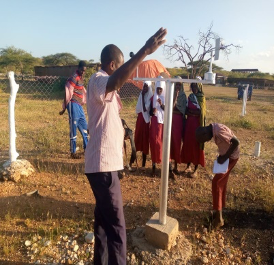
WIND VANE
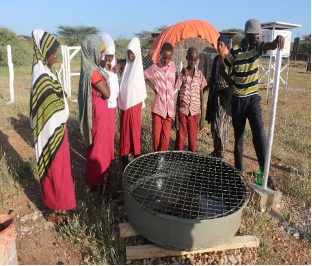
EVAPORATION PAN

EXHIBIT ON CULTURAL ECOLOGY
Collaborative efforts resulted in the development of a teaching weather station in Gotu which is able to record temperatures, rainfall, wind speed and direction, evaporation rate and sunshine. Complementary to this is an indoor permanent educational exhibition on culture and climate change to serve as repository for documented ecological knowledge and climate coping strategies among pastoralist and nomadic communities. As a resource center, it is a learning hub on Climate Change in the region.
(The project “Promoting Community Understanding and Adaptation to Climate Change through Inter-generational, Inter-cultural Alliances and Action” was implemented by Lattu Lifespring, a community-based organization in Isiolo County in Northern Kenya in December 2020 with the support of PAWANKA Fund.)

